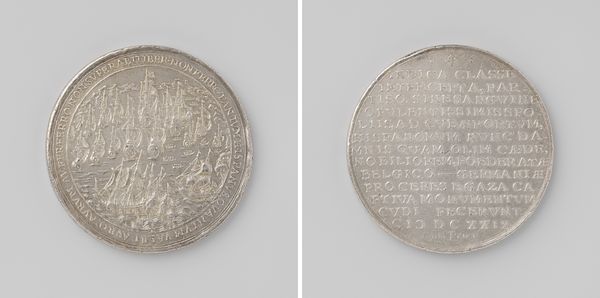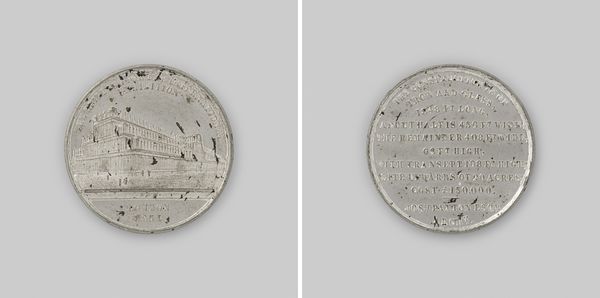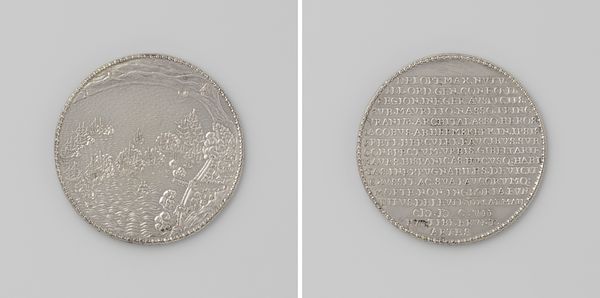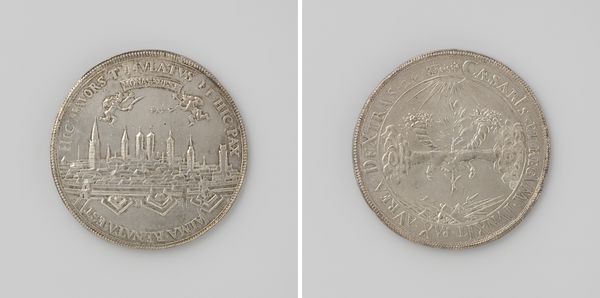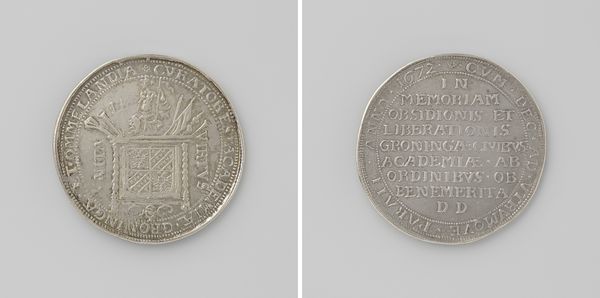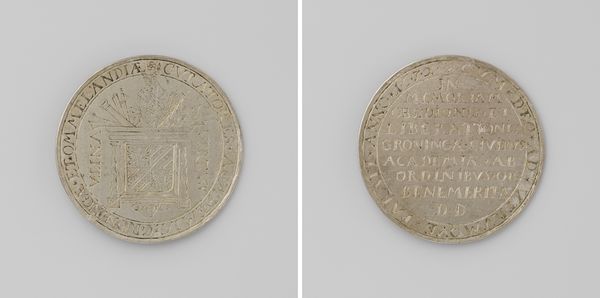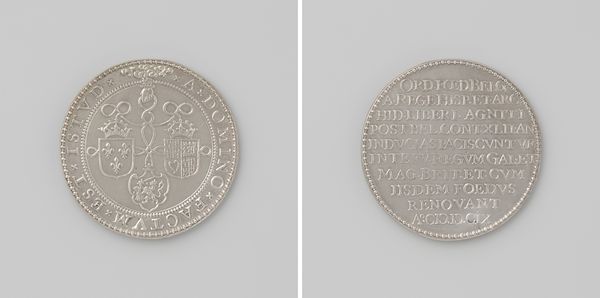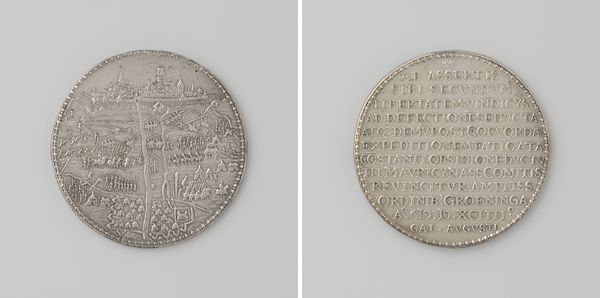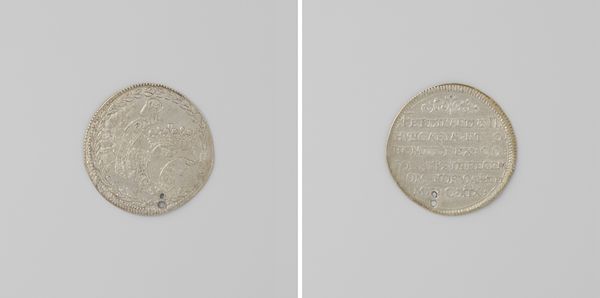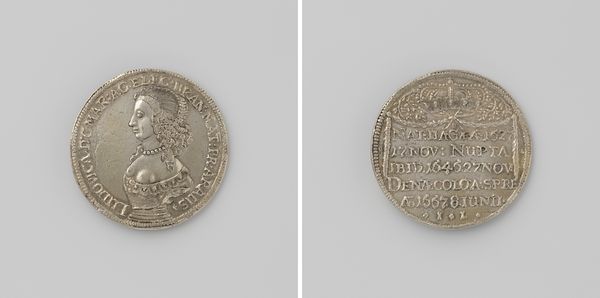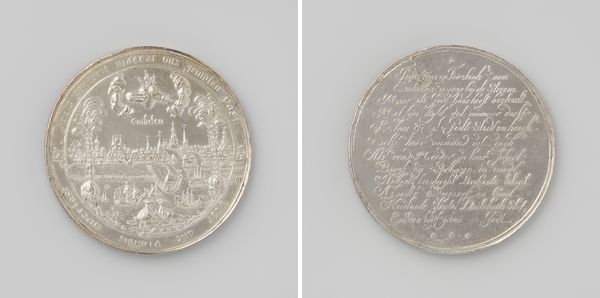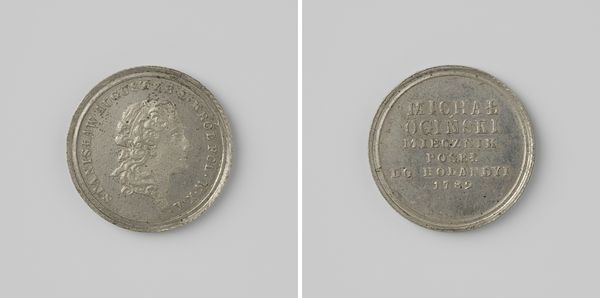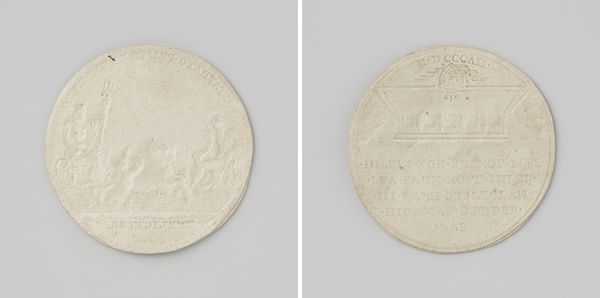
print, metal, engraving
#
narrative-art
#
baroque
# print
#
metal
#
ceramic
#
history-painting
#
engraving
Dimensions: diameter 7 cm, weight 119.95 gr
Copyright: Rijks Museum: Open Domain
Curator: Here we have a metal print titled "Vrede van Rijswijk, ter ere van Willem III," which translates to "Peace of Rijswijk, in Honor of William III." It's dated 1697, and created by Nicolas Chevalier. Editor: The silvery surface immediately strikes me as austere and formal. Even though it's small, it radiates power. A visual encapsulation of a significant historical event frozen in time. Curator: Precisely. These commemorative prints were quite popular for marking important treaties. The Peace of Rijswijk, of course, temporarily halted Louis XIV's expansionist policies. William III, as the Dutch Stadtholder and King of England, was a key player in negotiating this peace. Editor: I notice the elaborate architectural elements – triumphal arches and ornate facades dominating one side, which gives the impression of an orderly and glorious event, as if the city is celebrating a returning hero. Then I look at the reverse, which is covered with detailed, symmetrical text. Curator: These kinds of images, though seemingly straightforward, often underwent considerable scrutiny from civic and state authorities. Remember, public image and perception were becoming ever more central to the conduct of politics. What's really fascinating is how visual elements contribute to a particular framing of peace – ordered, celebrated, triumphant. Editor: And not necessarily representative of reality. It’s interesting how the architectural motifs frame the peace itself. Buildings are strong symbols of lasting legacy, as if Chevalier’s work claims the Peace will have the same endurance. I see wreaths framing the text on the reverse as well; laurels of victory, almost. Curator: It really brings forward the role of such engravings. Consider how this piece would circulate – embedding itself into the cultural consciousness of the period, and shaping perceptions for generations to come. This kind of commemorative art was a significant instrument in constructing collective memory and legitimizing political decisions. Editor: Exactly. I mean, looking at it now, it's hard not to think about how such symbols continue to shape our understanding of power and diplomacy. You see patterns echoing through time. Thank you for sharing your perspective. Curator: Likewise, it is the symbols embedded in them that give us a more accurate insight into its lasting cultural effects.
Comments
No comments
Be the first to comment and join the conversation on the ultimate creative platform.
